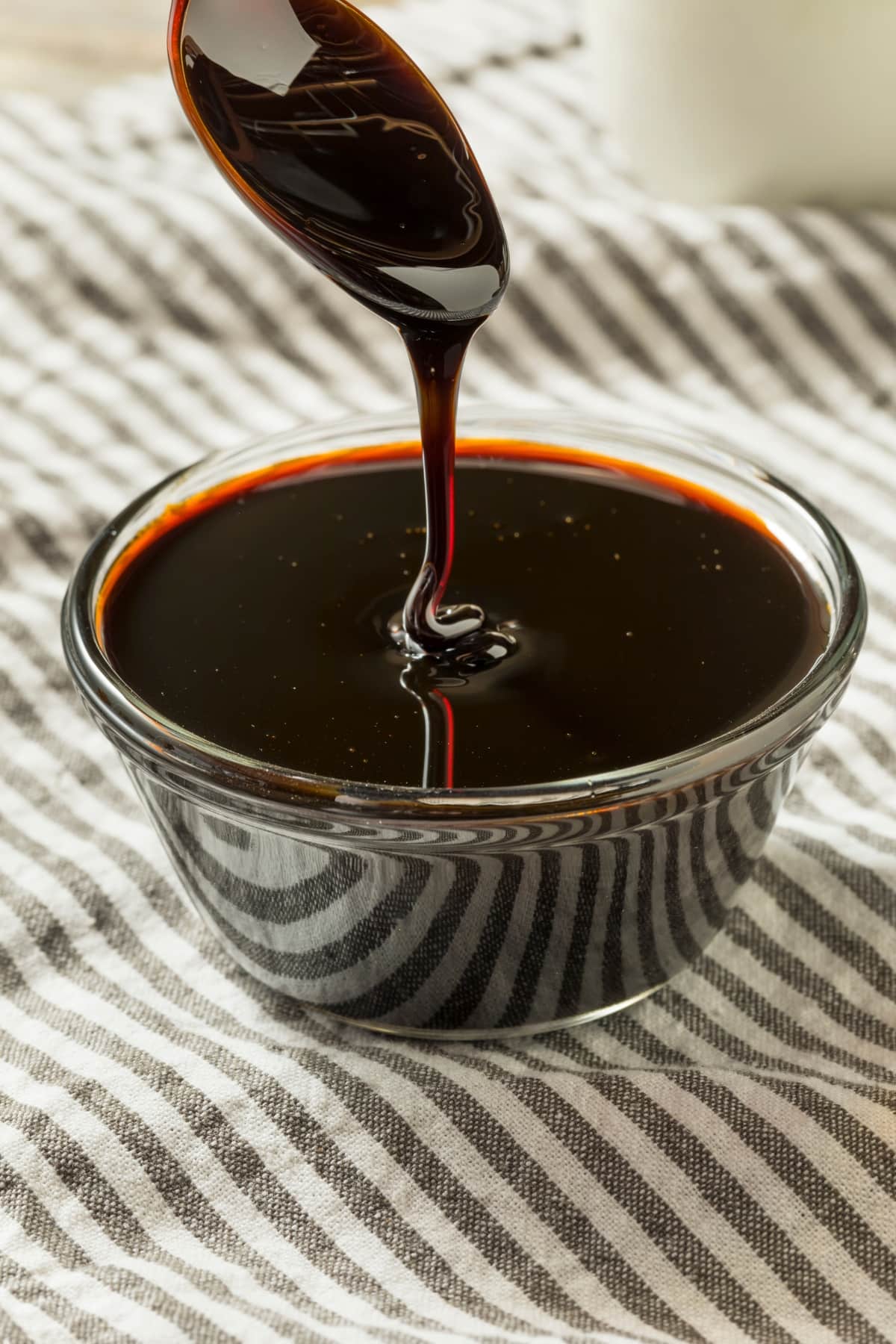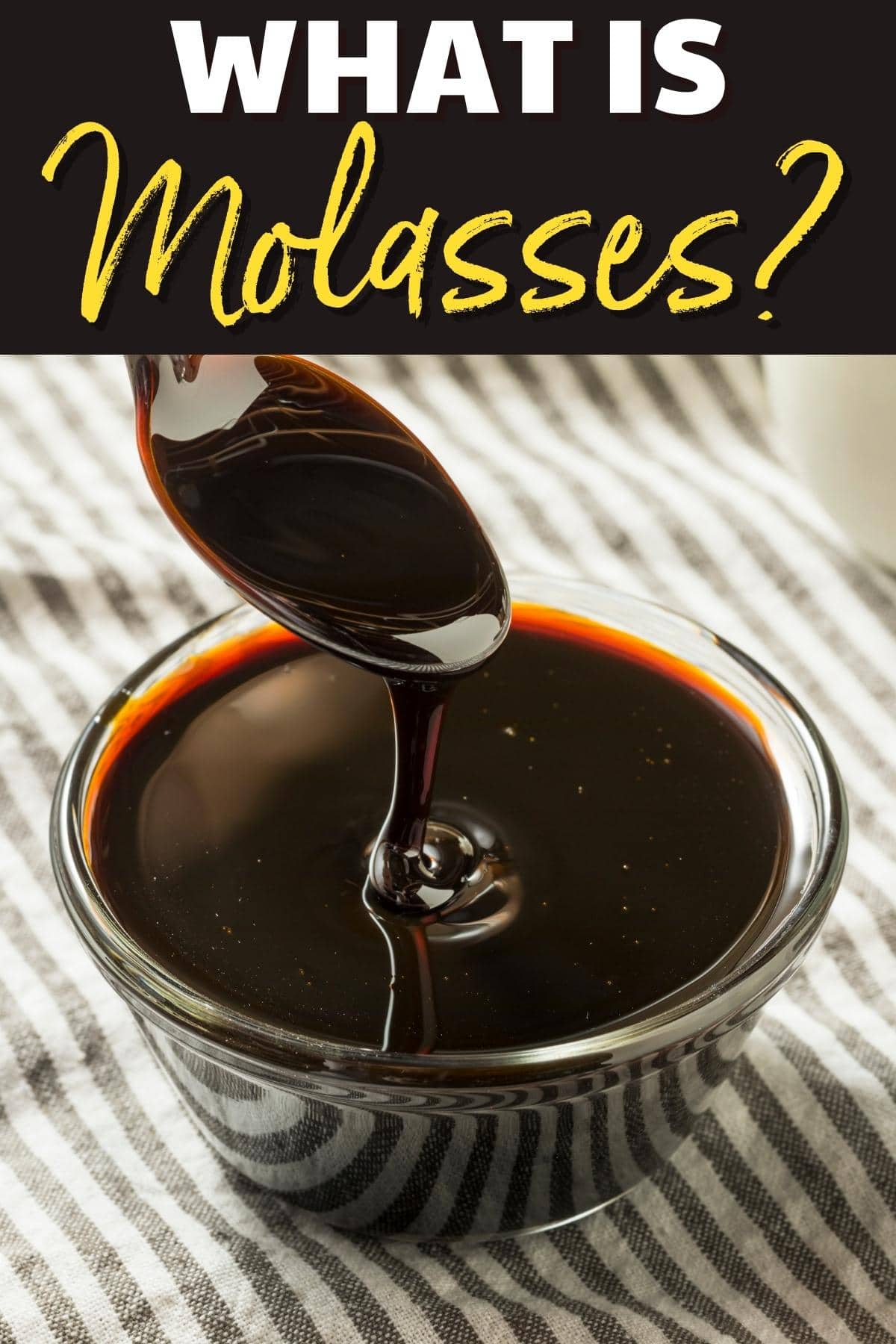
Molasses is a thick, dark, syrup used as a sweetener. It’s typically made from sugarcane or sugar beets.
It’s a byproduct of sugar extraction and comes in various grades, including light, dark, and blackstrap. It has a robust, caramel-like flavor and is commonly used in baking, marinades, and sweetening recipes.
Additionally, it contains some minerals and vitamins, making it a slightly more nutritious alternative to refined sugar.
It’s a staple in kitchens worldwide and adds a distinct sweet touch to various dishes and desserts.
Stick around and find out why this rich syrup deserves a spot in your pantry!
What is Molasses?
Molasses is a thick, dark brown syrup produced during the sugar refining process. It’s obtained as a byproduct when sugarcane or sugar beet is processed into sugar.
It’s used in various foods to add sweetness and a distinct flavor. For example, it’s commonly used in baking and the production of rum.
It’s a thick, super-rich syrup that’s bursting with minerals. But despite its sugary origins, it’s less sweet than other syrups.
The best part is its consistency. This stuff is so gloriously thick, it moves at a snail’s pace when it’s poured out of the jar. And if it’s chilly outside, it turns even thicker!

Types of Molasses
As mentioned, molasses is a thick, sweet syrup. And it’s the secret ingredient in a ton of recipes. But it’s not just a one-note wonder! There are three types of molasses, each with its own unique taste.
Let’s take a closer look so you know which to use when.
Light Molasses
Light molasses comes from the first boiling of sugar cane or beet juice. It has a golden hue and the highest sugar content among the other types.
Better yet, light molasses is just the right kind of sweet. It’s often the star of the show in candies and desserts. It adds a subtle depth to the sweet flavors.
Dark Molasses
This one’s a bit more intense. Dark molasses is born from the second boiling of the sweet juice. As a result, it’s thicker, darker, and less sweet than light molasses, with a bit of a bitter bite.
If you want to add a rich, robust flavor to your recipes, use dark molasses. It’s ideal for gingerbread cookies, savory glazes, and BBQ sauce.
Blackstrap Molasses
Blackstrap molasses is the final product after the third boiling, which packs a punch! It’s the darkest, thickest, and least sweet of all. But don’t let that turn you off.
This molasses is a nutritional powerhouse with minerals like iron, calcium, and magnesium. It’s also the strongest type in the molasses family. It’s not as sweet, but it’s super good for you.
You can use it for recipes like BBQ glazes or sauces. But it’s not for sweet treats like cookies or cake.

What Does Molasses Taste Like?
Molasses has a unique flavor. It’s a world away from the simple sweetness of granulated sugar. It’s a delightful blend of sweet, bitter, and smoky.
The taste can vary greatly depending on the type, but let’s break it down.
- Light molasses is the sweetest of the bunch. It’s mild and relatively sweet with a slightly smoky, caramel-like flavor, making it more complex than regular sugar.
- Dark molasses takes things up a notch. It still has some sweetness, but it’s more about the deep, rich flavors. Think of it as burnt sugar meets bitter coffee.
- Blackstrap molasses is a health food hero. This stuff is thick, dark, and not very sweet. Its flavor is like a complex symphony of bitterness with a smoky aftertaste.
The taste of molasses is a flavor adventure. It’s sweet, bitter, and wonderfully rich.
Molasses vs. Sorghum Molasses
Even though sorghum molasses sounds like it’s in the same league as molasses, there’s a plot twist. Sorghum molasses is not truly “molasses” in the classic sense.
Why? Because it’s not crafted from sugarcane or sugar beets. Instead, the star of the show here is the sorghum plant, a cultivated grass.
Like sugarcane, it offers its sweet essence as it boils into a syrup. In terms of flavor, both have a unique profile. Regular molasses has a complex, rich flavor ranging from sweet to bittersweet.
Sorghum molasses, however, often has a slightly sour flavor and is less sweet than light molasses.
Unsulphured vs. Sulphured Molasses
Sulphured molasses is treated with sulfur dioxide as a preservative, typically used on young sugarcane. This process gives it a robust and chemical taste.
Most people lean towards unsulphured molasses because of its cleaner, sweeter flavor. Unsulphured molasses is what’s commonly found on grocery store shelves.

Molasses Uses
Here’s how you can add a splash of molasses magic to your culinary adventures:
1. Baking: Molasses is a big hit in the baking world. It’s found in recipes for gingerbread, cookies, pies, and cakes. It brings a depth of flavor and moistness.
2. Sauces and Marinades: Dark and blackstrap molasses makes for rich, tangy BBQ sauces or marinades for meats. They add a unique smoky sweetness that’s unbeatable.
3. Bread: Ever wondered how pumpernickel and other dark breads get their color and distinct flavor? The answer is often molasses.
4. Stews and Baked Beans: Molasses can be added to slow-cooked dishes like stews or baked beans. It gives them a hearty, sweet depth of flavor.
5. Sweetening Beverages: Molasses can be used to sweeten hot beverages like coffee, tea, or cocktails. It’s a great alternative to refined sugar.
Remember, molasses is powerful, so a little can go a long way. Experiment with different amounts to find your sweet spot. Happy cooking!
Where to Buy
Ready to go on a molasses hunt? Luckily, it’s not too hard to find! Nab a bottle of this sweet, syrupy goodness at most local supermarkets and grocery stores.
Molasses is also found in health food stores because of its rich nutrient profile, particularly blackstrap molasses. It might be with other sweeteners or in the health supplement section.
If you’re more of an online shopper, shopping websites will undoubtedly have molasses.

How to Store
Keep molasses in its original jar and clean the rim after each use. Store it in a cool, dry place.
Avoid heat and humidity, which can cause mold. If your kitchen is warm, refrigerate it but allow it to reach room temperature before using it.
Unopened molasses lasts 1 to 2 years past the “best by” date. Once opened, it’s good for a year with proper storage. Check it for off-odors, discoloration, or crystallization to determine if it’s past its prime.
Substitutes for Molasses
Molasses is readily available across the states. But what if you can’t find it?
Have no fear, there are plenty of substitutes for molasses. For example:
- Brown Sugar – You don’t need as much brown sugar. So if your recipe calls for 1 cup of molasses, use about 3/4 cups of brown sugar.
- Honey – Honey will affect the taste of your recipes. You can use honey in a 1:1 ratio. But it’s best in recipes that only need a small amount of molasses.
- Dark corn syrup – This will give you the same overall taste and consistency. So use it in a 1:1 ratio.
- Maple syrup – Maple syrup is usually much thinner than molasses, so use half the amount needed. Alternatively, use a 1:1 ratio but reduce other liquids in the recipe.
- Date syrup – This is thinner than molasses and slightly sweeter, so use about 3/4 cups per 1 cup of molasses.









